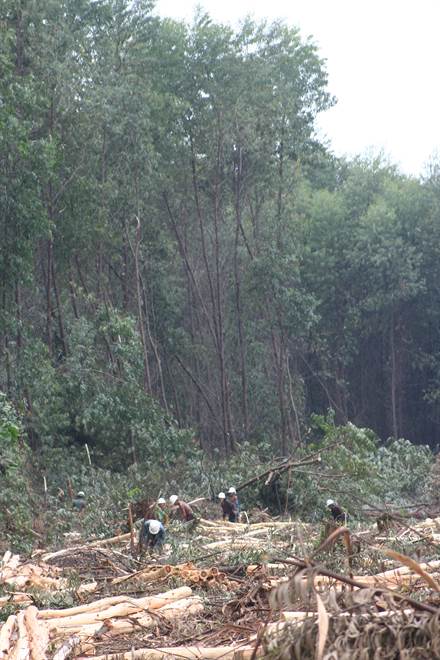
APP struggles to meet commitment on peat-friendly pulpwood
Asia Pulp and Paper (APP), the biggest pulp and paper company in Indonesia, celebrates its 2-year anniversary of its Forest Conservation Plan today. APP has eliminated the use of natural forest fiber in its entire supply chain and halted new activities on peatlands. However, analysis shows that the company struggles with its commitment to adopt Best Management Practices in its existing plantations and in peat swamp forests to avoid GHG emissions.

APP has for many years been responsible for rapid deforestation and drainage of tropical peat swamp forests, particularly on the islands of Sumatra and Borneo. Today, Rainforest Alliance released its evaluation of progress of APP’s Forest Conservation Policy in its first 18 months with input from Wetlands International and others concluding that APP made limited progress on peatland.
APP struggles to control threats like illegal logging and peatfires. It also remains unclear how APP will implement the new Indonesian Governmental Regulation on peatlands (PP 71/2014) which requires water tables in peatlands to be kept above 40 cm in the whole concession area. In addition, it is worrying that even after two years of implementation, APP has not yet set any target for reducing CO2 emissions resulting from the conversion and drainage of peatlands.
Marcel Silvius, Wetlands International: “APP’s commitment and efforts to enhance the sustainability of its plantations represents a brave step in the right direction. Acacia plantations on peat cause huge greenhouse gas emissions and lead to land subsidence and flooding: they are therefore inherently unsustainable. If APP is serious about its commitment, it will have to consider how to responsibly phase out its operations from peat.”
APP recently contracted a Peat Expert Team (PET) with some of the worlds’ leading scientists on peat management. It seems however that current operating procedures did not yet receive input from the PET as they are not consistent with Best Management Practice on peatlands. Stakeholders have not been consulted in developing the scope of the assignment, and it remains unclear if the results from the PET analysis will be public.
Wetlands International welcomes APP’s decision to develop peat subsidence models and flooding projections as a core assignment of the PET. Lowland peatlands in which APP operates will subside when drained because the organic peat material evaporates as CO2. Science shows subsidence occurs with 5 cm per year, which over time will lead to frequent and increased flooding of vast areas of these peatlands, having their base near sea level. In the longer term this will render these land areas unproductive, which will have major economic and social consequences (Hooijer et al., 2010 and 2012).
Wetlands International expects that APP’s flood projections will show the necessity of major changes in the plantation activities on peatlands. Best Management Practices should give priority to phase out drainage based Acacia plantations from peatlands to mineral soils. Many drained areas will need rewetting and rehabilitation, after which in some zones innovative plantation techniques and species could be introduced that can produce under very wet circumstances.
